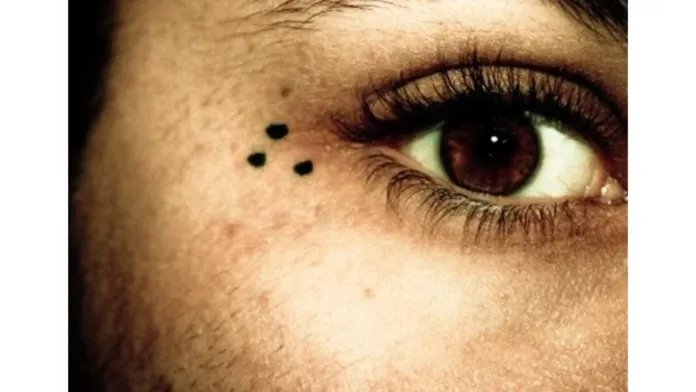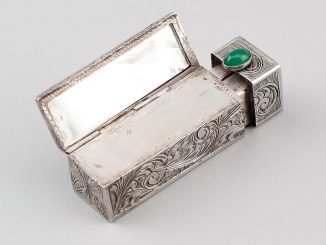Tallulah Willis, the youngest daughter of Demi Moore and Bruce Willis, has revealed her autism diagnosis, inspired in part by her father’s courageous battle with frontotemporal dementia

In a heartfelt social media post, the 30-year-old shared a childhood memory of her dad carrying her on the red carpet, hinting at a personal revelation about her adult diagnosis.
A Candid Moment on Instagram
Tallulah, one of three daughters of Bruce Willis, 69, and Demi Moore, 61, posted a nostalgic video of herself as a child, playfully engaging with her father at a film premiere.
Encouraging her 408,000 followers to participate in the conversation, she captioned the March 15th clip: “Tell me you’re autistic without telling me you’re autistic [sic].”
Fans quickly responded, expressing admiration for the sweet father-daughter moment while others, familiar with autism traits, noted her behaviors and Bruce’s gentle reaction.
“Your dad is truly special, and so are you. The way he stayed calm and just kept holding you is beautiful,” one user commented. Another added, “In your defense, shaved heads can be just as soothing as a Japanese Zen garden.”
A third wrote, “His concern for your feelings is pure magic. I’m so glad you have these moments captured forever.”
Tallulah’s Diagnosis
One of the most notable responses came from a psychologist specializing in neurodivergent conditions, who asked if she had been diagnosed as a child.
Tallulah replied, “This is the first time I’m sharing my diagnosis publicly. I found out this summer, and it has completely changed my life.”
Her response resonated with many, as autism spectrum disorder (ASD) is often diagnosed in childhood, but many—especially women—go undiagnosed until adulthood.
Recognizing Stimming
The Centers for Disease Control and Prevention (CDC) describes ASD as a developmental condition that affects communication, social interactions, and often includes repetitive behaviors or specific interests.
Tallulah’s sister, Scout LaRue Willis, 32, commented on the video, noting that her younger sister was “stimming”—a term used to describe repetitive movements or actions that help individuals with autism regulate sensory experiences.
“Dude, the ear curl,” Tallulah responded, pointing out the moment she playfully folded her father’s ear, which made him smile. “I wish we had better audio.”
Supporting Bruce Willis
Tallulah, Scout, and their older sister Rumer Willis, 35, have been a pillar of love and support for their father as he faces aphasia and frontotemporal dementia (FTD).
Bruce’s wife, Emma Heming Willis, has also shared touching insights into his character, writing, “Being in his arms is the safest place in the world. He’s a true gentleman, full of love to give and share. That’s the Bruce I see every day.”
At this time, Tallulah has not shared further details about her diagnosis, but her openness has sparked meaningful conversations about autism awareness and late diagnoses.
What are your thoughts on Tallulah’s journey? Share your perspective and spread the story to encourage further discussion..
Exploring the Diverse Meanings of Tattoos in Different Cultures
Tattoos and body art hold different meanings for different people. What one culture celebrates might be seen as inappropriate in another. A symbol or design that carries deep significance in one place might be dismissed as mere decoration in another.

Throughout history, humans have used their appearance to express themselves and convey messages. If you live in a busy area, you’ve probably seen people with tattoos frequently. Some tattoos are reminders of youthful choices, while others have profound meanings, telling stories or preserving traditions.
Personally, I find it fascinating when I notice the same tattoo on different people. It makes me wonder about the story behind the tattoo and why that person chose to permanently mark their body with it.
The Three Dots: Symbolizing “Mi Vida Loca”

The three dots tattoo, often seen among prisoners, represents a life of chaos and unpredictability. Though not linked to a specific gang, it symbolizes a broader connection to the gang lifestyle and its inherent risks. Understanding this tattoo’s meaning can reveal someone’s deep involvement in the criminal subculture.
Another common design I’ve encountered is the ‘red string of fate.’ Despite seeing it multiple times, I never looked into its meaning until recently.
The ‘Red String of Fate’ Tattoo
Rooted in Asian cultures, the ‘red string of fate’ is often depicted as a simple bow with tails, typically inked on the thumb of a man and the pinky finger of a woman. This small tattoo symbolizes romance and hope, inspired by a Chinese legend about a matchmaker who knows our destined partner.
The idea of being fated to meet someone isn’t limited to romantic relationships and crosses cultural boundaries. The concept of being connected to another person by an invisible thread is common across various societies.
The ‘red string of fate’ suggests a predestined bond between two people, regardless of the circumstances. While some find comfort in this idea, others prefer to believe they have control over their own destiny.





Leave a Reply